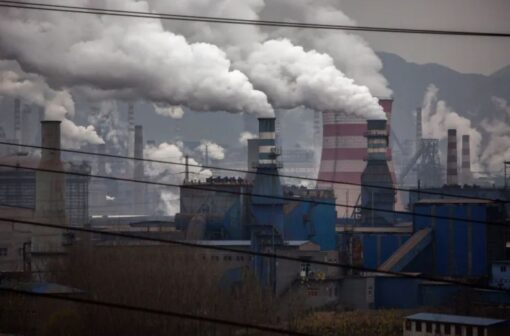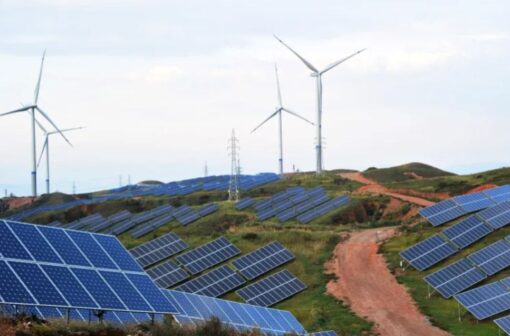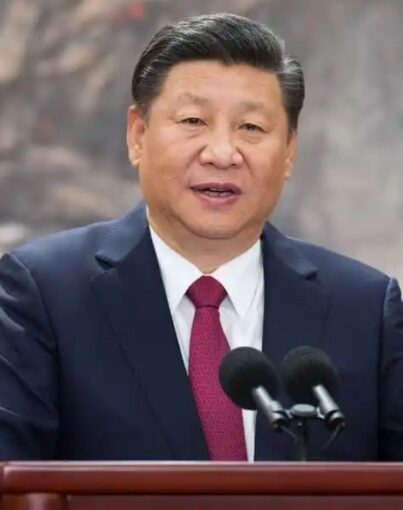China’s newly announced climate target has sparked widespread concern among scientists, policymakers, and environmental campaigners, who argue that the pledge falls dramatically short of the action needed to limit global warming in line with the Paris Agreement.
Speaking via video link to the United Nations General Assembly on Wednesday, President Xi Jinping committed his country to reduce greenhouse gas emissions by 7 to 10 percent from their peak by 2035.
While this marks the first time Beijing has set an absolute reduction target rather than a vague pledge to curb growth, experts say the numbers are nowhere near enough to keep global temperature rise below 1.5 degrees Celsius.
Xi presented the announcement as evidence of China’s role as a responsible global power. He described the transition away from fossil fuels as “the trend of our time” and pledged that non-fossil energy sources would account for more than 30 percent of national consumption by 2035.

He also vowed to expand solar and wind capacity sixfold compared with 2020 levels. But the details left many underwhelmed. Bill Hare, CEO of the Berlin-based Climate Analytics think tank, said bluntly that the target was “very disappointing” and “unlikely to drive down emissions” at the scale required.
According to his assessment, China is already on track to achieve similar reductions under current policies, meaning the new commitment adds little ambition.
The Paris Agreement, adopted in 2015, calls for countries to pursue efforts to limit global warming to 1.5 degrees Celsius above pre-industrial levels.
To align with this threshold, China would need to cut its emissions by at least 30 percent by 2035, according to the Centre for Research on Energy and Clean Air. Anything less, analysts warn, will place catastrophic pressure on ecosystems and societies worldwide.
Li Shuo of the Asia Society Policy Institute criticized Beijing’s decision, saying, “science calls for a sprint, but Beijing is tiptoeing forward.” He argued that China missed a golden opportunity to establish itself as a global leader on climate action just as the United States under President Donald Trump is rolling back commitments and dismissing climate science.
For years, China has occupied a paradoxical position in the climate crisis. It is the world’s largest emitter, responsible for roughly one-third of global carbon dioxide output, yet it has also become a superpower in renewable energy.
China manufactures around 80 percent of solar panels, 70 percent of electric vehicles, and about 60 percent of wind turbines globally. Its state-backed companies dominate the supply chains for batteries, solar wafers, and clean-energy components.
These achievements have allowed China to project itself as a central driver of the global energy transition. But the credibility of this role is repeatedly undermined by its simultaneous expansion of coal power.
Despite Xi’s earlier pledges to strictly control new coal plants, last year alone China approved nearly 100 gigawatts of new coal projects, the highest level in almost a decade.
Andreas Sieber of 350.org warned that the latest target leaves “ample room for continued emissions growth from coal-heavy sectors” because it is vague about baseline years and overly conservative on renewable expansion.
The construction of coal plants not only locks in decades of high emissions but also risks leaving China with stranded assets as global demand shifts toward low-carbon energy.
Still, some analysts insist the announcement should not be dismissed outright. Yao Zhe, a policy adviser at Greenpeace East Asia, noted that China often sets modest targets it can comfortably surpass.
She said that Beijing’s actual pace of decarbonization, particularly in the power sector, may exceed official projections, with emissions possibly peaking as early as this year. If true, China could outperform its stated goal and accelerate momentum in global climate negotiations.
Li Shuo echoed that sentiment, pointing out that China’s dominance in clean technology could eventually drive it toward more ambitious commitments as economic self-interest aligns with climate responsibility.
China’s approach comes at a delicate moment for global climate diplomacy. The withdrawal of the United States from the Paris accord under President Trump has left a leadership vacuum.
Trump used his own UN address this week to describe climate change as “the greatest con job ever perpetrated on the world,” comments that drew outrage from scientists and environmental advocates.
With Washington stepping back, many expected Beijing to step up as a counterweight. Instead, the new pledge risks reinforcing skepticism about whether major powers are willing to act fast enough to prevent devastating warming.
The uncertainty extends to whether China’s emissions have already peaked. Some experts believe they may have plateaued this year due to a combination of pandemic-related economic slowdown and rapid renewable deployment.

Others caution that any decline may be temporary, particularly if Beijing ramps up coal consumption to stimulate growth during economic downturns. Without a clear definition of “peak emissions,” Xi’s pledge leaves significant ambiguity about how reductions will be measured.
The stakes could not be higher. Scientists warn that exceeding 1.5 degrees Celsius will dramatically increase the risk of extreme heatwaves, floods, wildfires, and crop failures.
Already, climate-linked disasters have displaced millions and inflicted billions in damages across Asia, Africa, and North America this year alone.
The International Energy Agency has repeatedly said that China’s trajectory will play a decisive role in determining whether the world can keep warming within safe limits.
At the same time, China faces enormous domestic challenges. Its vast industrial base is still heavily reliant on coal, with provinces dependent on fossil fuel industries for jobs and tax revenues.
Transitioning these regions toward renewables without triggering economic instability will be politically sensitive. Beijing’s leaders are wary of setting aggressive targets they cannot guarantee, preferring incremental steps they are confident of meeting.
This political caution helps explain the modesty of the new pledge, but it also raises concerns about whether gradualism is compatible with the urgency of the climate emergency.
Global reaction to Xi’s announcement has reflected a mix of frustration and reluctant optimism. European officials urged China to “go further, faster,” warning that time is running out.

Climate activists staged demonstrations in multiple cities, accusing Beijing of “greenwashing” by trumpeting renewable expansion while continuing to bankroll coal.
Yet financial markets responded more positively, with renewable energy stocks climbing on expectations of stronger demand in the world’s largest market.
What happens next will depend on whether China uses this target as a floor or a ceiling. If it truly represents the limit of Beijing’s ambition, the world is likely headed toward far more dangerous warming.
If, however, China is preparing to surprise with overperformance, the announcement could serve as a cautious first step toward greater ambition.
As Li Shuo observed, China’s dominant position in clean technology could eventually pull it into a leadership role almost by default. For now, though, the world’s biggest polluter has left its partners hoping rather than celebrating.
Meta description (SEO optimized):
China’s new climate pledge to cut emissions by 7-10% by 2035 is criticized as underwhelming, falling short of Paris goals, despite growth in renewables.


